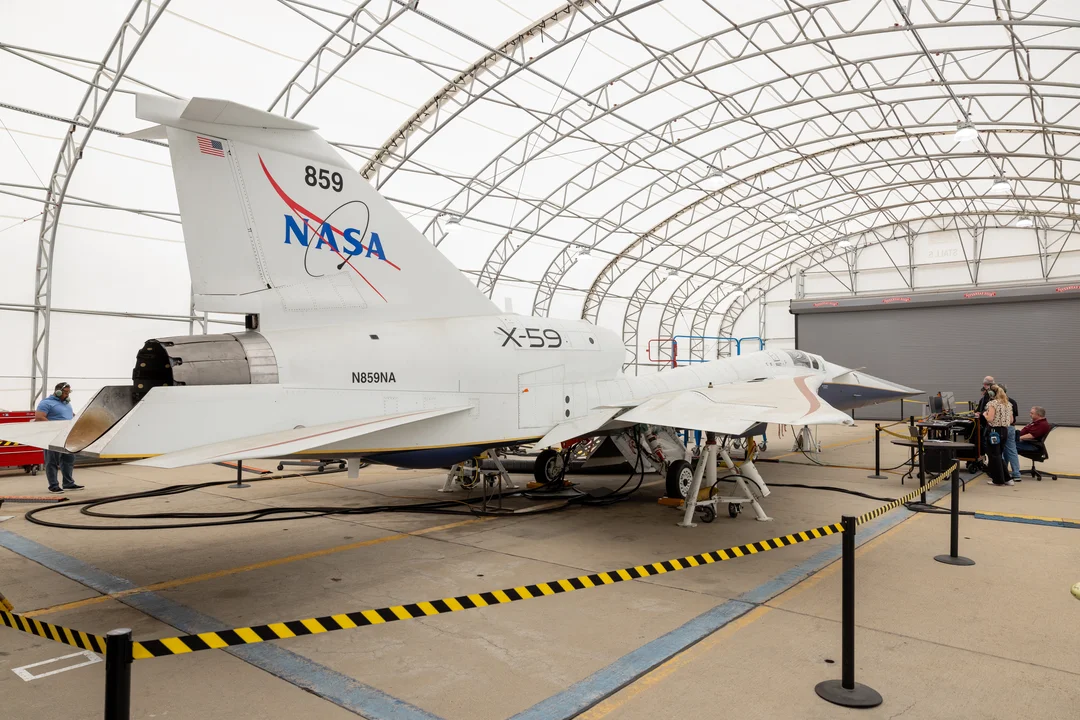
NASA’s X-59 Quiet Supersonic Jet Achieves Milestone with ‘Aluminum Bird’ Ground Tests
NASA's quest to revolutionize air travel with quieter supersonic flight took a significant leap forward as the NASA X-59 experimental aircraft successfully completed a series of critical ground-based simulation tests. These "aluminum bird" tests, as engineers affectionately call them, put the X-59 through its paces as if it were cruising high above the California desert, all without ever leaving the ground. This marks a pivotal moment in the project, bringing the dream of commercial supersonic air travel over land closer to reality.

The core objective of these simulations was to rigorously assess the seamless integration of the X-59's hardware and software, ensuring they can effectively work together and manage unforeseen challenges during actual flight. According to Yohan Lin, the X-59’s lead avionics engineer at NASA’s Armstrong Flight Research Center, "The idea behind these tests is to command the airplane’s subsystems and flight computer to function as if it is flying."
Engineers activated most of the aircraft's systems, sans the engine, leveraging the flight computer to manipulate control surfaces in response to simulated changes in altitude, speed, temperature, and system health. Pilot inputs were meticulously monitored to gauge the aircraft's response, even simulating failures to examine the system's compensatory capabilities and the pilot's ability to recover. The X-59's cockpit, ejection seat and canopy come from a T-38 "Falon" training jet and the landing gear from an F-16 "Falcon" fighter jet. The research aircraft (X-plane) is 100 feet long (30.4 meters) and has a 29.5-foot (9-meter) wingspan.
This approach, dubbed "aluminum bird" testing (a nod to its primary construction material), replaces the traditional "iron bird" method that utilizes a metal frame with representative subsystems. As the X-59 is a unique aircraft, using the actual aircraft for testing has proven to be a superior and more cost-effective choice.
"We thought we might find a few things during the tests that would prompt us to go back and tweak them to work better, especially with some of the software, and that’s what we wound up experiencing. So, these tests were very helpful," Lin stated, emphasizing the value of the ground-based simulations.
The successful completion of the "aluminum bird" testing marks a crucial step toward the X-59's anticipated first flight later this year. Before that monumental occasion, the aircraft will undergo taxiway tests at Lockheed Martin’s Skunk Works facility in Palmdale, California. Other milestones in the X-59’s logbook included: a Flight Readiness Review, firing up the GE Aerospace jet engine, Checking the wiring and Testing the aircraft’s ability to maintain a certain speed while flying.
The X-59's development is part of NASA's Quesst mission, which aims to pave the way for commercial supersonic air travel over land by significantly reducing the intensity of sonic booms. The X-59 is projected to reach a maximum speed of Mach 1.5 or 990 mph (1,590 km/h), and cruise at Mach 1.42 or 940 mph (1,510 km/h) at 55,000 feet (16,800 meters).
With the "aluminum bird" tests behind them, the Quesst mission team is now focusing on preparing the X-59 for its upcoming flight tests. The data collected promises to revolutionize the future of air travel, making supersonic flight a practical reality for everyone.
What are your thoughts on the future of supersonic travel? Will NASA's X-59 truly change the way we fly? Share your opinions and predictions in the comments below!